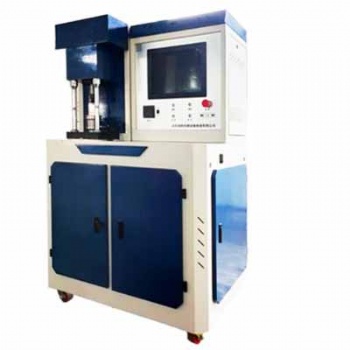News
Understanding Compression Testing Machines: Key Insights and Applications
Understanding Compression Testing Machines: Key Insights and Applications
Compression testing is a fundamental procedure in materials testing, used to evaluate a material's behavior under compressive forces. At the heart of this process is the compression testing machine, a versatile piece of equipment essential across numerous industries. In this blog, we’ll explore the features, applications, and benefits of this indispensable tool.
What is a Compression Testing Machine?
A compression testing machine is designed to measure the ability of a material to withstand compressive forces before deformation or failure. It applies controlled pressure to test specimens like concrete, metals, plastics, and composites, recording data about their compressive strength, deformation, and elasticity.
Key Features of Compression Testing Machines
Load Frame and Platen: A rigid frame houses platens where the sample is placed and compressed.
Precise Load Cells: Ensure accurate measurement of applied forces.
Digital Interfaces: Modern machines feature digital displays or software for real-time monitoring and data analysis.
Adjustable Crossheads: Accommodate a variety of specimen sizes and shapes.
Safety Mechanisms: Protect operators and equipment during testing.
Applications of Compression Testing Machines
Construction Industry:
Testing the compressive strength of concrete, cement, and bricks to ensure structural integrity.
Automotive Sector:
Evaluating the performance of components like foams, rubbers, and springs.
Packaging:
Assessing the strength of cardboard boxes and plastic containers under stacking forces.
Metallurgy:
Testing metals and alloys for load-bearing capacities.
Plastics and Polymers:
Measuring compression strength and deformation properties.
How Does a Compression Testing Machine Work?
Specimen Placement: The material sample is placed between two platens or within a chamber.
Force Application: The machine applies a compressive force to the specimen at a controlled rate.
Data Collection: Sensors measure force, displacement, and deformation until the sample fails or a predefined load is reached.
Analysis: Data is displayed and can be further analyzed to understand material performance.
Types of Compression Testing Machines
Universal Testing Machines (UTMs): Versatile machines that perform both tensile and compressive tests.
Hydraulic Compression Machines: Known for their high capacity, ideal for concrete and metals.
Servo-Controlled Machines: Offer precise control and real-time data feedback, suitable for advanced materials testing.
Benefits of Using a Compression Testing Machine
Reliable Results: Accurate and repeatable measurements ensure material quality.
Compliance with Standards: Machines can conform to ASTM, ISO, EN, and other international standards.
Versatility: Can test a wide range of materials and applications.
Enhanced Safety: Modern machines incorporate safety features to protect operators.
Conclusion
A compression testing machine is a cornerstone of material testing, providing crucial insights into how materials respond under pressure. Whether you are testing construction materials or developing innovative packaging solutions, this equipment ensures that products meet rigorous performance and safety standards.
Invest in a high-quality compression testing machine to enhance your testing capabilities, improve quality control, and meet the demands of today's competitive markets.
marshall electric compactor factory, two columns asphalt automatic mixing machine factory, ceramic tiles coefficient of restitution measuring device factory, ceramic tiles glaze thickness measuring instrument factory
Categories
Contact Us
- +86-18615632092
- wtbequipment@hotmail.com
- sophie-tester
- +86-18615632092




 售前客服
售前客服